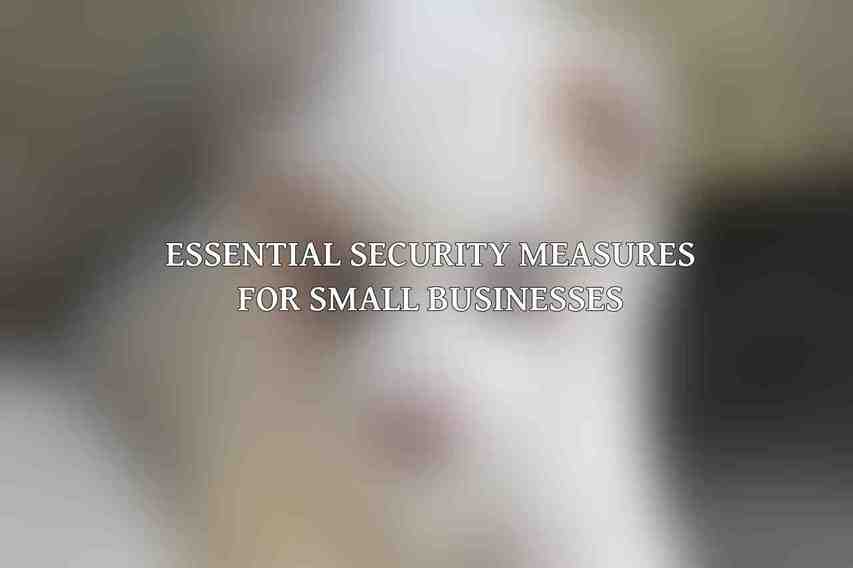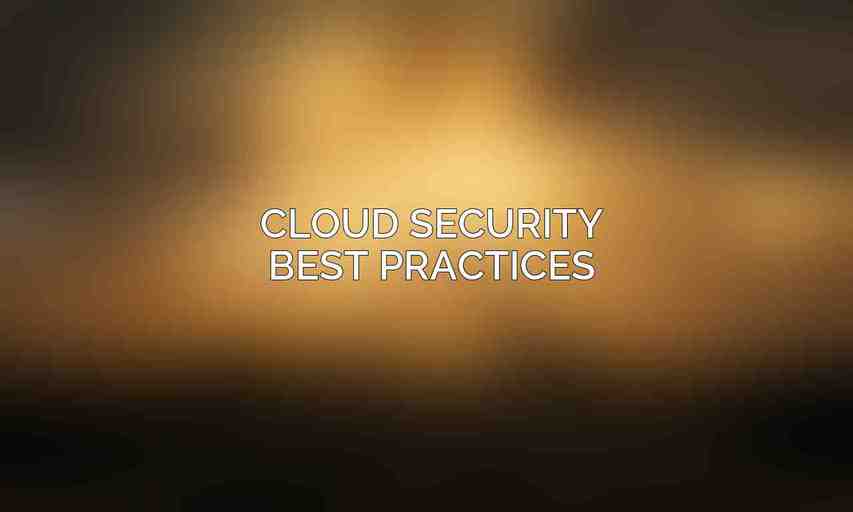Where businesses rely heavily on cloud technology, understanding cloud security is paramount. Cloud security refers to the set of policies, technologies, and controls deployed to protect data, applications, and infrastructure in the cloud. It encompasses various aspects such as data protection, identity management, compliance, and more. The cloud offers scalability, flexibility, and cost-efficiency, but without proper security measures in place, businesses are at risk of cyber threats and data breaches.
The importance of cloud security cannot be overstated. Small businesses are particularly vulnerable to cyber attacks due to their limited resources and expertise. A breach in the cloud can result in devastating consequences, including financial losses, reputational damage, and legal implications. By prioritizing cloud security, businesses can safeguard their valuable assets and maintain the trust of their customers.
The Cloud Security Shared Responsibility Model is a crucial concept for small businesses to grasp. Cloud service providers (CSPs) like Amazon Web Services, Microsoft Azure, and Google Cloud assume responsibility for securing the infrastructure of the cloud, including servers, storage, and networking. However, the responsibility for securing data, applications, and access controls falls on the business owner. This shared responsibility model underscores the need for businesses to implement robust security measures within their own cloud environments.
Common Cloud Security Threats
Small businesses face a myriad of cloud security threats, ranging from data breaches to insider attacks. It is essential to be aware of these threats to proactively protect your business’s cloud environment.
Data Breaches: Data breaches involve unauthorized access to sensitive information stored in the cloud. Cybercriminals often target small businesses to steal data for financial gain or extortion.
Malware Attacks: Malware, such as viruses, worms, and ransomware, can infect cloud systems through malicious links or attachments. These attacks can compromise data integrity and disrupt business operations.
Phishing Scams: Phishing scams trick users into divulging sensitive information like login credentials. In the cloud, phishing emails may impersonate legitimate sources to gain unauthorized access.
Denial-of-Service (DoS) Attacks: DoS attacks aim to overwhelm cloud services with traffic, rendering them inaccessible to legitimate users. These attacks can disrupt business continuity and lead to downtime.
Insider Threats: Whether intentional or accidental, insider threats pose a significant risk to cloud security. Employees with access to sensitive data can misuse their privileges, leading to data leaks or sabotage. Dive deeper into Increase Your Small Business Efficiency with Cloud-Based Productivity Tools
Understanding these common threats is the first step in developing a proactive cloud security strategy for your small business.
Essential Security Measures for Small Businesses

Securing your small business cloud environment requires a layered approach encompassing various security measures.
A. Multi-Factor Authentication (MFA)
Multi-Factor Authentication (MFA) enhances security by requiring users to provide multiple forms of verification to access cloud services. The benefits of MFA include:
- Increased security: MFA adds an extra layer of protection beyond passwords.
- Implementation of MFA involves enabling additional verification steps like SMS codes, biometrics, or authentication apps.
- Best practices for MFA implementation include enforcing MFA for all user accounts, regularly updating authentication methods, and conducting MFA training for employees.
B. Access Control
Effective Access Control ensures that only authorized individuals can access specific resources within the cloud environment. This includes:
- Role-Based Access Control (RBAC): Assigning permissions based on job roles to restrict access to sensitive data.
- Least Privilege Principle: Granting users the minimum level of access necessary to perform their tasks.
- Identity and Access Management (IAM): Managing user identities, roles, and permissions centrally to streamline access control.
C. Data Encryption
Data Encryption is crucial for protecting sensitive information in the cloud. This involves:
- Encryption algorithms, such as Advanced Encryption Standard (AES) and Data Encryption Standard (DES), to secure data at rest and in transit.
- Encryption methods, including file-level and database-level encryption, to safeguard data integrity.
- Key management practices to secure encryption keys and manage their lifecycle effectively.
D. Security Monitoring and Logging
Continuous Security Monitoring and Logging are essential for detecting and responding to security incidents in real-time. This includes:
- Leveraging cloud-native logging services provided by CSPs for real-time visibility into cloud activities.
- Utilizing log analysis tools to identify anomalies, unauthorized access, or suspicious activities.
- Developing incident response plans to mitigate security incidents promptly.
E. Cloud Backup and Recovery
Cloud Backup and Recovery strategies are crucial for data protection and business continuity. This involves:
- Establishing backup strategies, including regular backups of critical data and applications.
- Defining Recovery Point Objectives (RPOs) to determine acceptable data loss in case of an incident.
- Setting Recovery Time Objectives (RTOs) to minimize downtime and ensure swift recovery of operations.
F. Regular Security Assessments
Conducting Regular Security Assessments helps identify vulnerabilities and weaknesses in your cloud environment. This includes:
- Performing penetration testing to simulate cyber attacks and identify security gaps.
- Utilizing vulnerability scanning tools to assess and remediate potential vulnerabilities.
- Enlisting third-party experts to conduct security audits and ensure compliance with industry standards.
By implementing these essential security measures, small businesses can enhance the resilience of their cloud environments against emerging cyber threats.
Cloud Security Best Practices

In addition to specific security measures, small businesses should follow Cloud Security Best Practices to fortify their cloud infrastructure.
A. Use a Reputable Cloud Provider
Choosing a Reputable Cloud Provider with a strong track record in security ensures that your data is hosted in a secure and compliant environment. Major CSPs invest heavily in security measures and compliance certifications to offer robust protection for their customers.
B. Create a Cloud Security Policy
Developing a comprehensive Cloud Security Policy outlines security guidelines, protocols, and responsibilities for all stakeholders. This policy should address data handling, access control, incident response, and regulatory compliance to align with your business objectives and security requirements.
C. Train Employees on Cloud Security
Employee awareness and training are critical components of cloud security. Providing Cloud Security Training educates staff on best practices, security protocols, and how to identify and report security incidents. By creating a security-conscious culture, employees become proactive defenders against cyber threats.
D. Implement Security Automation
Security Automation streamlines security operations and enhances threat detection and response capabilities. This includes:
- Security Information and Event Management (SIEM) tools for centralized monitoring and analysis of security events.
- Leveraging cloud-native security APIs for automated security enforcement and compliance checks.
E. Stay Informed about Cloud Security Threats
Staying abreast of Cloud Security Threats through industry publications, security blogs, and threat intelligence sources is crucial for proactive risk mitigation. Regularly updating your knowledge and practices in response to evolving threats ensures your security measures remain effective.
Additional Security Considerations
Beyond the essential security measures and best practices, small businesses should consider additional security considerations to bolster their cloud defenses.
A. Cloud-Specific Regulatory Compliance
Adhering to Cloud-Specific Regulatory Compliance requirements, such as the General Data Protection Regulation (GDPR) or the Health Insurance Portability and Accountability Act (HIPAA), is essential for protecting customer data and ensuring legal compliance.
B. Vendor Risk Management
Vendor Risk Management involves assessing and monitoring the security practices of third-party vendors who have access to your cloud environment. Establishing strict vendor contracts, conducting security assessments, and ensuring compliance with security standards are vital for mitigating vendor-related risks.
C. Cloud Security Certifications
Obtaining Cloud Security Certifications, such as the Center for Internet Security (CIS) benchmarks or ISO 27001 certification, demonstrates your commitment to maintaining high security standards in the cloud. These certifications validate your compliance with industry best practices and enhance trust with partners and customers.
securing your small business cloud environment demands a comprehensive approach that combines technical solutions, educational initiatives, and strategic planning. By understanding cloud security, implementing essential security measures, following best practices, and considering additional security considerations, small businesses can fortify their cloud infrastructure against evolving cyber threats and safeguard their valuable assets.
Remember, as technology evolves, so do cyber threats. Stay vigilant, stay informed, and prioritize the security of your small business cloud environment to ensure a resilient and secure digital future.
For further reading on cloud security and best practices, check out this resource by Cisco.
If you’re looking to delve deeper into cloud encryption methods, consider exploring this guide provided by the Cloud Security Alliance.
Frequently Asked Questions
What are the benefits of securing a small business cloud environment?
Securing your small business cloud environment helps protect sensitive data, reduces the risk of cyber attacks, ensures regulatory compliance, and enhances customer trust.
What are some common security threats to small business cloud environments?
Common security threats include data breaches, malware attacks, phishing scams, insider threats, and misconfigured cloud settings.
How can I improve the security of my small business cloud environment?
You can improve security by implementing strong encryption, using multi-factor authentication, regularly updating software, conducting security audits, and training employees on cybersecurity best practices.
What are the best practices for securing cloud-based applications in a small business setting?
Best practices include monitoring access controls, encrypting data both in transit and at rest, limiting user permissions, implementing regular backups, and staying informed about the latest security threats.
How can a small business recover from a security breach in the cloud environment?
In the event of a security breach, it’s important to contain the breach, assess the damage, notify stakeholders, conduct a post-incident review, and implement additional security measures to prevent future breaches.

